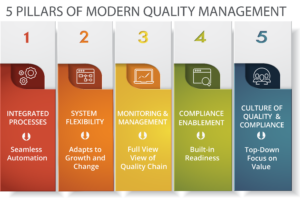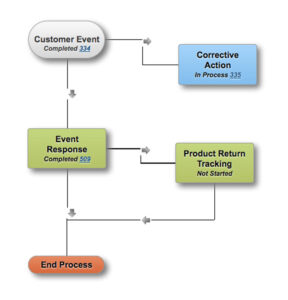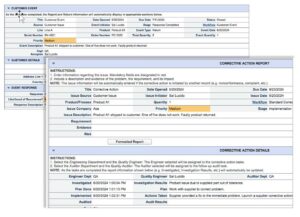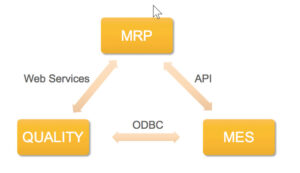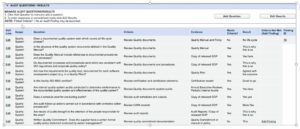September 28, 2017
After decades spent helping companies develop and implement enterprise quality management systems, a consistent pattern has emerged in all effective system implementations. Regardless of industry, a few very important quality system elements are consistent in building effective quality management systems.
This blog focuses on these elements, or “pillars.” Each of the pillars connect to help a company deliver quality products and services to customers and clients. These five attributes are not only powerful building blocks of effective enterprise quality management systems, but they are also industry agnostic.
Pillar 1: Process Integration
While most companies execute on these functions, the degree of integration and automation varies greatly from company to company. The concern of the first pillar is how well these processes are integrated together. For example, if the Customer Complaint process is completely separated from the Corrective Action process, then there is room for improvement.
The graphic below is a live workflow diagram. Note that the Customer Complaint Event is linked to the Corrective Action process. The workflow is configured such that if the Customer Event meets certain criteria (such as an identified design problem) a Corrective Action is automatically launched.
By clicking on the Customer Complaint ID number, the record opens. The form indicates a problem with Product A1. The Event Description notes that one of five products that were shipped to the customer does not work. Because this is due to a Design Problem, a Corrective Action will be assigned with pre-populated information from the Complaint. See below.
This example illustrates the benefits of integrating processes. Integration improves cross-department visibility, increases efficiency and improves accuracy.
Pillar 2: System Flexibility and Extensibility
Unfortunately, no one can predict what the future holds. Being able to adapt and continuously innovate is extremely important. In summary, the second pillar is all about connectivity, expandability, and configurability. Look for three main attributes when evaluating the adaptability of a quality management system:
- How easily can it be connected to other systems?
- How easy is it to automate new processes?
- For each of those processes what is the effort required to configure that system?
Connectivity is the ability to connect with other processes or systems across the enterprise and outside of the enterprise. Referring to the figure below (Diagram E3), the MRP system and Quality Management Systems are separated by the corporate cloud.
It would be desirable if both systems had a web services interface to connect these processes together in a reliable and secure manner. Alternatively, we may want to connect the MRP system with the MES system. It would be advantageous if each had a programming interface that would allow data to be passed between the two systems. Without these types of connectivity capabilities systems are destined to remain islands.
Expandability enables you to add unlimited workflows. The beauty of an expandable system with pre-built templates is you don’t have to turn them on unless you need them. If you are evaluating software, look to see how much room for expansion there is. Ensure you can add an unlimited number of additional workflows beyond those delivered to accommodate unforeseen future needs.
Configurability eliminates the time and expense of changing low-level source code, reconfiguring databases and building workflows from scratch. Look for systems that have tools including drag-and-drop configuration.
Pillar 3: Centralized Monitoring and Management
A best of breed enterprise quality management system should provide the following capabilities:
- Alerts & Notifications: The system should remind users when tasks are due and go late. This helps ensure that projects are completed on schedule which reduces response times and increases customer satisfaction. In addition, alerts should be automatically triggered to let users know of trending problems and performance dips.
- Reporting: Reports are essential for the monitoring and management of a quality system. Most systems come with canned reports. However, it is important to fully evaluate the reporting capabilities in detail. Enterprise quality management systems should allow you to easily modify existing reports and create new reports without changing source code or database settings. Reports should display real-time data and allow you to drill down into the report details.
- Measurements & KPIs: Measurement or KPIs are goal-based reports. For example, you have a goal to respond to customer issues within 24 hours. Therefore, you would set up a measurement that tracks responses to that 24-hour goal. Ensure your system allows you to configure these types of reports and automatically notify you when goal thresholds are crossed.
- Management Dashboards: A good management dashboard allows you to display a user’s work in one easy to read screen. Management dashboards display tasks, reports, and measurement. It helps manage progress, identify trends, monitor goals and be alerted to pending and late tasks.
Pillar 4: Compliance Enablement
Almost all industries have regulatory standards and requirements. A modern enterprise quality management system should have compliance built into the system. Compliance should not be an afterthought. For example, your industry may have regulatory requirements for how electronic signatures are handled or how security is controlled. Confirm that the software system you are using provides built-in compliance to these standards.
Additionally, it is important to configure enterprise quality management systems to guide users through collecting information required to comply with regulations and standards. In the image shown above, the audit form displays all of the questions required for a specific type of audit. This prompts the user through the correct set of steps for conducting the audit and managing any findings where audit criteria is not met.
Pillar 5: Culture of Quality & Compliance
Establishing a culture of quality and compliance, perhaps the most important quality management pillar, shows a commitment from the top that flows down throughout the rest of the organization. A quality system, no matter who well designed, cannot work if there is no visible management buy-in. The attributes of this pillar include:
- Top-down commitment to quality and compliance
- Active engagement and communication from management
- Accountability by executive staff and management
Top-down commitment means that adequate resources and budgets are committed for quality functions to be effectively performed. When employees see a lack of funding or emphasis on quality functions and systems, it sends a message that quality is not important. Alternatively, active engagement by management can drive a company’s commitment to quality. For example, recognition of quality initiatives and achievements help to build a culture of compliance. Visibility into quality improvements result in a stronger drive for continuous improvement within the company as well as for its customers and clients. Accountability means that company leaders are making decisions that are in the best interest of the customer as not strictly bottom-line driven.
Conclusion
Regardless of industry or organizational complexity, these five pillars allow companies to form a solid foundation for any quality management system. These pillars are as important to a life science company as they are to an energy company. They apply equally to companies in aerospace, general manufacturing, automotive, or high tech industries.
While establishing these five pillars does require investment, in the long run a company will grow faster and be more profitable when there is an effective enterprise quality management system in place.
Want to dive deeper? View the 5 Pillars Webinar!


